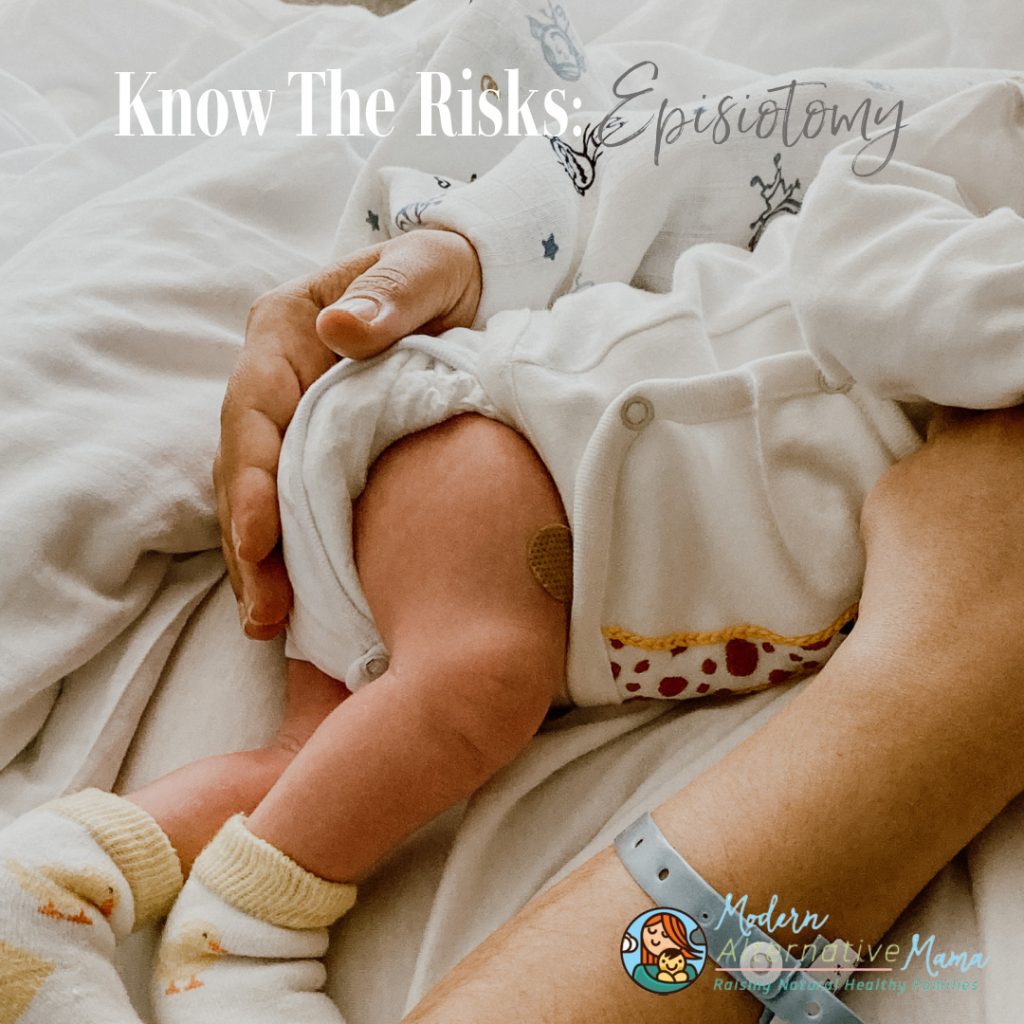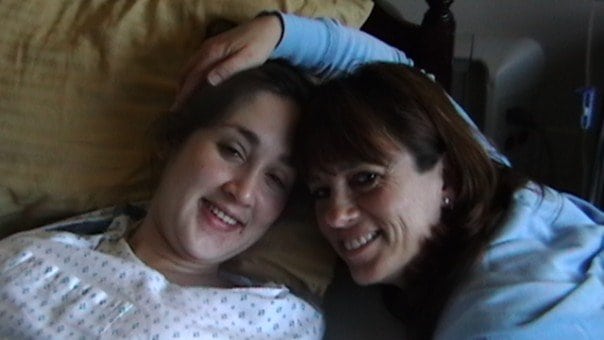An episiotomy is a common surgical procedure in the delivery room, but it is often unnecessary and poses risks. Be prepared to ask the right questions.
By Miranda, contributing writer
If you would have asked me, “What is an episiotomy?” six years ago, I would have given you a blank unknowing stare. I first heard the term while I was taking a 10-week Bradley Method birth class. As this was my first pregnancy, it surfaced a lot of questions and also some panic. So, let’s go ahead and talk about a topic that ALL women should know about but is often unmentioned and avoided.
What Is an Episiotomy?
An episiotomy is when a doctor cuts the vaginal opening with scissors or a scalpel during childbirth. Specifically, the tissue from the vagina to the anus is cut, which is known as the perineum. Are you flinching and cringing already? I know I am…
Why Are Episiotomies Performed?
History of episiotomies dating back to the 1750s. By 1979, data shows that episiotomies were used in almost 80% of first-time births. Health care professionals had often pointed to benefits such as preventing severe natural tearing and easier recovery. However, studies conclude that there is no benefit to “routine episiotomies” for either the mother or the baby.
For this reason, the American College of Obstetricians and Gynecologists has recommended against routine episiotomies since 2006. And recent data shows a decrease in episiotomy rates in the United States of 12% in 2012.
Cause for Concern
Despite a decline, the episiotomy rate varies greatly depending on the hospital and the doctor. In addition, the prevalence of this procedure is common practice worldwide. Data from 11 countries showed rates from 17.4% to 91.8% for episiotomies performed during delivery. It’s a discussion that sounds very similar to those about the high rates of C-Sections. Instead of allowing the natural childbirth process to occur, there is still excessive or inappropriate use of interventions.
An experienced midwife, healer, and herbalist from Belize, Miss Hortence Robinson shared the following wisdom at a medical conference: The first (question) was, “Miss Hortence, do you do episiotomies?” She answered with a simple, “No, I do not”. The crowd broke into whispers and I could hear, “What? How good could she be if she doesn’t do that?”
The final ethical or moral issue is that oftentimes this procedure is performed without the mother’s knowledge. According to a New York Times article, “A 2013 survey of 2,400 new mothers who gave birth in hospitals in the United States found that 59 percent of the roughly 500 participants who had an episiotomy were not involved in the decision-making process.” Something as important as this would surely warrant some discussion with the doctor, and your explicit consent of course.
Episiotomies Short and Long-term Consequences
Episiotomies do not come without risks and can cause consequences in both the short and long term. These include:
- bleeding
- severe pain
- infection
- pain with intercourse (dyspareunia)
- urinary and/or fecal incontinence
- hematoma formation
- pelvic organ prolapse
So, Are Episiotomies Ever Necessary?
“According to Katherine Green, an Assistant Clinical Professor of Nursing at UMass Amherst, it’s now used only in the event that a baby’s head or shoulder becomes stuck in the birth canal.” This is known as shoulder dystocia and is present in approximately 0.2% to 3% of deliveries.
As an available medical tool, some health care professionals may still suggest episiotomies during a prolonged second stage of labor, when there is worry about the fetal heart rate or when the mother is extremely fatigued.
Be Prepared
- Ask your doctor or midwife how often they’ve performed episiotomies? For what reasons?
- Find out your hospital’s episiotomy rate via this website or by speaking to the maternity unit. It’s recommended that hospitals have an episiotomy rate of about 5 percent at most.
- Write out a clear birth plan, specifying your wishes regarding an episiotomy.
- Ask other mothers about their birth experience at your delivery hospital.
- Talk with your partner, family, doula, or whoever is going to be present during your labor. Share this article with them. Are they ready to ask the right questions on your behalf and advocate on your behalf?
- Take a birth class, my vote is for the Bradley Method.
- Know your rights. You can say NO. Even if you sign consent forms, doctors cannot legally perform an episiotomy against your explicit will.
- Ensure you are being respected and treated fairly. Maternal treatment can be biased for BIPOC and minority women:
- “About 1 in 5 Black and Hispanic women reported poor treatment from hospital staff due to race, ethnicity, cultural background, or language, as compared to 1 in 12 white women.”
- “Black women are 3-4 times more likely to die from pregnancy-related complications and 3-4 times more likely to suffer from severe disability resulting from childbirth compared to White women.”








Hello! Thank you for writing such a useful and interesting article! This is a very complicated procedure, my mother told me that she was given it and then it was a necessary measure! Many women get along with her and it’s not easy! But nevertheless, this procedure still takes place, I heard that many women are unhappy with it, but it saves many lives! It’s good that you write about this and even more people will learn about this procedure!
Hello and thank you for commenting! Yes, episiotomies were very common in the past and still are in many countries. The main concern is that the procedure is used more often than necessary. Hopefully this article will help educate women and families in preparation for their deliveries.
Great article! Planning a homebirth when we have our first (still TTC) but if transfer happens are definitely ready to shout NO if they come at me with those Scissors! Not here for it
Great article! Planning a homebirth when we have our first (still TTC) but if transfer happens I’m definitely ready to shout NO if they come at me with those Scissors! Not here for it
Congratulations and all the best with your home birth! Thanks for reading 🙂
This cruel cut can happen against the mother’s wishes and before she realizes. Then, it’s too late. She is assaulted, wounded, her only recourse being the turmoil of legal proceedings. What new mother wants to devote her attention to prosecution with a new baby? They know this.